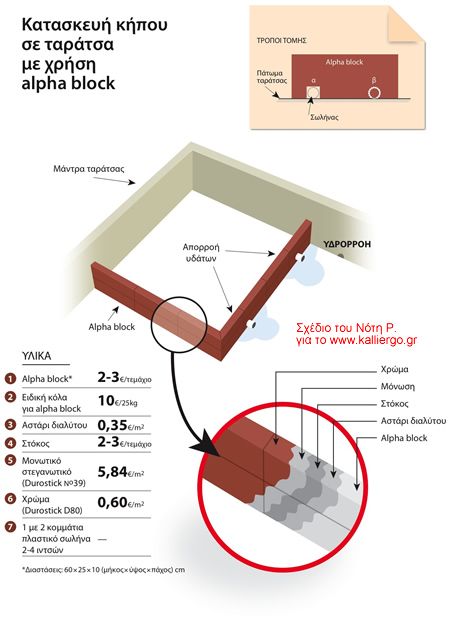How feasible and easy is composting when you live in an apartment in a city like Athens, Greece? Can you produce compost from earthworms in a city like Athens?
Composting requires collecting organic materials and depositing them in piles (stacks) for several months.
In the garden this is something relatively easy to do as there are private spaces and distances from neighbors.
On the other hand, the urban environment by its very nature has limitations that are not present in the garden.
The places available for compost production from organic materials are usually only, the roof, balconies, porches, storerooms and other common areas.
In this article we will look at the case of Mr. Nikos Papaspyrou, a postgraduate student in plant sciences specializing in greenhouse crops at Wageningen Research University in the Netherlands.
I was intrigued by the fact that he produces compost in the apartment building where he lives in Athens. I asked him if he would like to answer a series of questions on this subject and he very happily agreed.
Tell us a few words about yourself, Mr Papaspyrou

Since I was a small child I had a great love for nature and especially for plants. Since primary school I had already decided that I would become an agronomist.
The feeling of being in the garden or surrounded by plants is priceless and is something that fills me with life.
I did my Bachelor’s degree in agri-environmental systems management with a specialization in precision agriculture at Perrotis College in Thessaloniki, Greece.
I am currently in my second year of my Master’s degree on plant sciences with a specialization in greenhouse crops and a minor in organic crops at Wageningen Research University in the Netherlands.
When I finish I would like to work in greenhouses either abroad or in Greece.
Where do you do composting in the city?
I live in an apartment in Athens, Greece.
I compost in two ways: in a pile and with the help of earthworms.
The only space available to make compost in a pile was the communal roof of the apartment building.
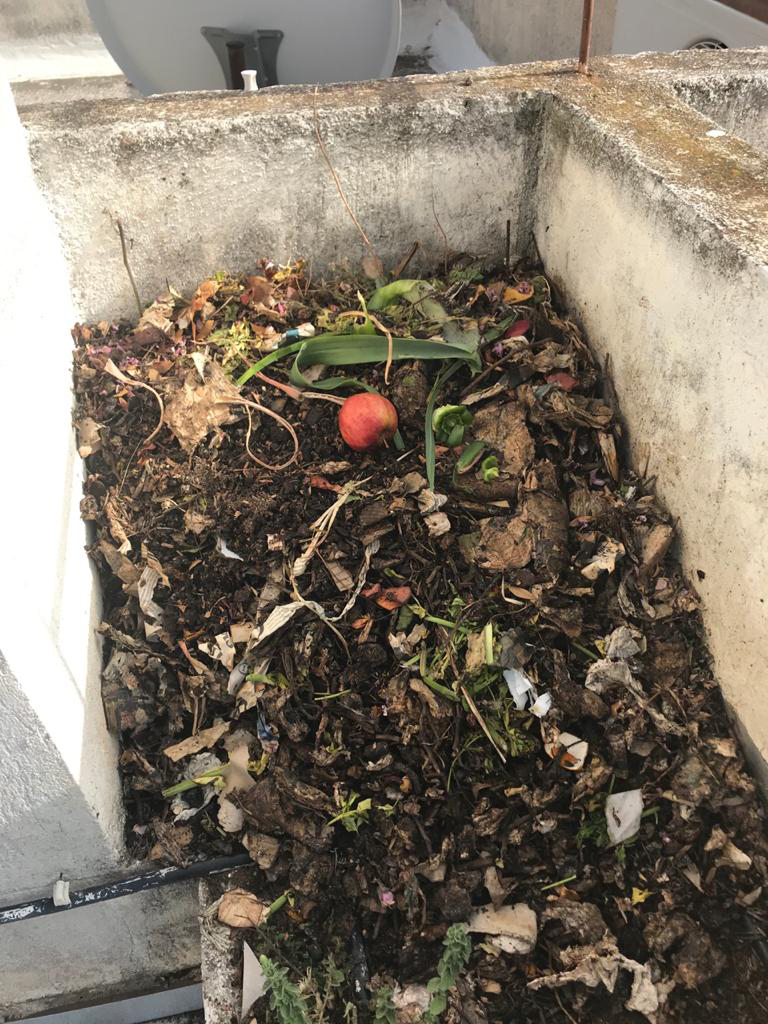
On the roof there are 3 concrete beds in the shape of a P. I have placed soil there. In two of the beds I grow ornamental and aromatic plants and in a small part of the third bed I produce the compost in a pile. The terraced garden also includes four garlands where I grow the family’s vegetables.
In the spring and summer the compost bed is open.
In the winter I cover the compost pile with geotextile to keep it from getting wet and to keep the humidity at the desired levels, but also to reduce heat loss which is important in speeding up the composting process.
The earthworms are in a box and this is placed in the storage room in the basement of the apartment building.
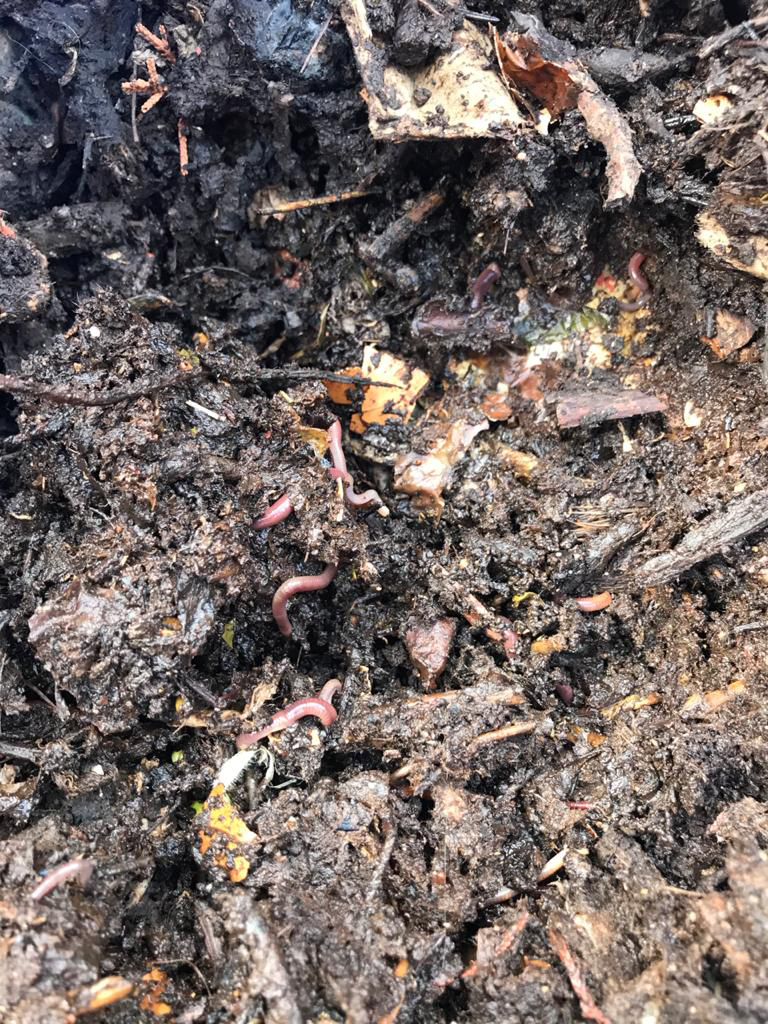
Fortunately I have not encountered any problems with the other residents of the apartment building. No one is complaining about odor.
What motivated you to start urban composting?
I started my first attempt at composting in high school without much success. The idea of recycling much of the household “garbage” to improve the soil and thus the plants excited me. Also from an environmental point of view the household waste that would end up in the landfill from our household would be minimal.
Composting in a pile on the roof
What ingredients do you put in the compost?
I divide the composting materials into “green” (high nitrogen content) and brown (high carbon content).
The ratio I usually follow is 2 parts brown : 1 part green or even 3 : 1. These are good ratios.
The “browns” that are also harder to find in town, I use leaves (not diseased), sawdust from prunings, paper coffee bags, the toilet paper and kitchen paper roll, and newspaper leaves (but not laminated).
For the “greens” I use scraps from all vegetables and fruits (except orange and lemon peels which I first dry in the sun). Orange and lemon peels should not be put in the compost pile because due to their high acidity, they slow down the process and alter the conditions of the pile.
I do not use dairy, meat, fish, or oils.
What is the process from the kitchen to the compost pile?
Fortunately the whole family is involved in the collection of “green” materials.
We collect the “green” materials in a 10 liter bin in the kitchen.
The “processing” I do is to cut all the organic waste into small pieces because this increases the surface area of the bacteria multiplication materials and the composting process is much faster.
In the summer we empty the bin into the compost pile every day. In the summer due to high temperatures anaerobic bacteria, fungi multiply quickly resulting in a stench in the bin.
In other seasons, empty the bin every 3 days or so.
How long does it take to prepare the compost?
The time varies depending on temperature, pile size, pH, humidity, mixing. I would say about 2-3 months.
Why didn’t you use a compost bin?
The reasons were:
Economic cost was one of the reasons I did not buy a compost bin.
Another reason is that these bins are usually large and I didn’t know if I would have enough materials to fill it.
By placing the compost pile directly into the soil of the flower beds, we benefit from the beneficial organisms that are present in the soil.
Additionally, I don’t have to collect the compost pile liquids as they end up in the soil.
Finally, for me it is easier to stir the pile in the open system.
But if I had the money and enough organic material, the composter solution is quite good as you will see below.
Any advice you want to give to those who are attempting to compost in a pile in the city?
For me the most important thing is to keep the balance of materials.
Because in the city “green” waste is abundant compared to brown waste, we tend to put more “green” waste, resulting in anaerobic conditions and thus stench (it happened to me several times in the past).
For me, the best source of “brown” debris is leaves and sawdust. But because they’re not easy to find in the city, I used newspapers.
In addition, the parameters I mentioned before (temperature, pH, humidity, oxygen) will contribute to a smooth fermentation of the materials.
Finally, if there is enough biomass to produce compost and money to buy it, a compost bin is more efficient and faster in producing compost than a pile.
Composting with earthworms
Earthworms are placed inside a box placed in the underground storage room of the apartment building and fed with biomass. Their “waste” is the fertilizer.

Where did you get the earthworms from and how much did they cost?
I ordered the earthworms over the Internet from an online store of an agricultural supply store. They came in a one-litre box. The purchase cost was 23 Euros.
What do you “feed” the worms and how often?
The proportions in the materials are the same as composting in a pile (2 parts brown : 1 part greens).
However, I avoid “green materials” with a high moisture content (e.g. tomatoes) to avoid increasing the moisture content too much.
I also avoid materials that do not compost quickly such as potato peels.
How often I feed the earthworms depends on the number of worms and the size of the bin and therefore how much material it can hold.
A good rule of thumb is to feed every time there is nothing left over from the previous feeding.
In my case I feed once a week, digging a little by hand and burying the “green” material.
What is the end product and how do you get it from the worms?
The end product is called “black gold” and organically it is the best organic fertilizer available.
It is essentially the feces of worms that contain beneficial enzymes, bacteria and other microorganisms that improve soil fertility and make nutrients readily available to plant roots.
The harvesting process is carried out using a sieve as in the regular bucket.
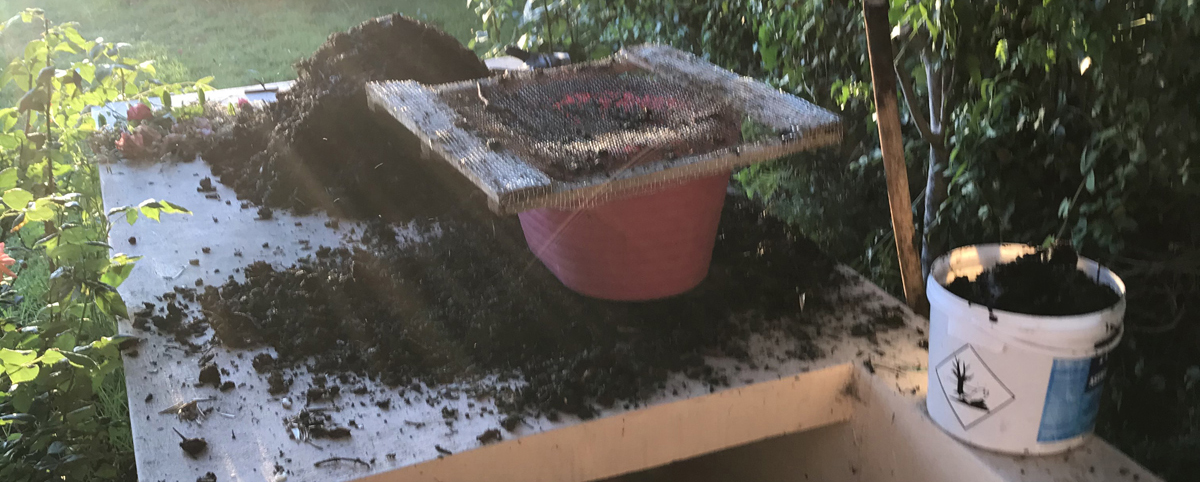
However, the process is more time-consuming.
In order not to sift the worms, the process is done by collecting in surface layers.
Earthworms are photophobic so each layer collected the worms tend to go deeper.
How long does it take you to fertilize the worms?
It depends on many factors (food, temperature, population).
I had 2 harvests in a 6 month period.
How fast and when do the worms reproduce?
A worm can reproduce after the first two to three months of life. Mature worms lay their eggs in a protective cocoon twice a week. Each cocoon contains at least 3 eggs. If conditions are good the eggs will hatch in 2-3 weeks.
Theoretically, under ideal conditions, their population can double in 3 months.
More information can be found here: https://thesquirmfirm.com/red-wiggler-breeding-frenzy
Do you have any advice for those who are trying their hand with earthworms?
The process is a bit more demanding than with simple compost because the balance can be lost more easily. The advice is as follows:
1) Be careful with the proportions of the materials.
2) Attention to humidity and temperature. The ideal temperature is 15 to 26 degrees Celsius. They can live at low temperatures down to 4 degrees Celsius, but their metabolism is significantly reduced. Above 30 degrees Celsius they have a problem.
3) If more than 20 worms are observed on the walls, conditions are not good. Most likely very acidic conditions have been created. In this case, the use of ash helps by raising the pH, reducing the acidity and increasing the alkalinity.
4) Drill holes around the perimeter of the surface for good ventilation and at the bottom to prevent waste from stagnating.
5) The basement for me was the ideal place to place the bin.
6) Fruits with lots of sugars like bananas and watermelon are some of their favorite foods.
7) Coffee grounds, eggshells, are as important to earthworms as fiber is to humans because they cleanse their digestive system.
8) Avoid citrus peels, onions, garlic because they create a very acidic environment in the bin.
Where do you make use of the compost and fertilizer from earthworms that you produce?
The compost is used for terrace plants, balcony ornamentals and houseplants, The earthworm fertilizer is used for vegetable gardens (tomatoes, cucumbers, lettuce).
I have seen a big difference in yield.
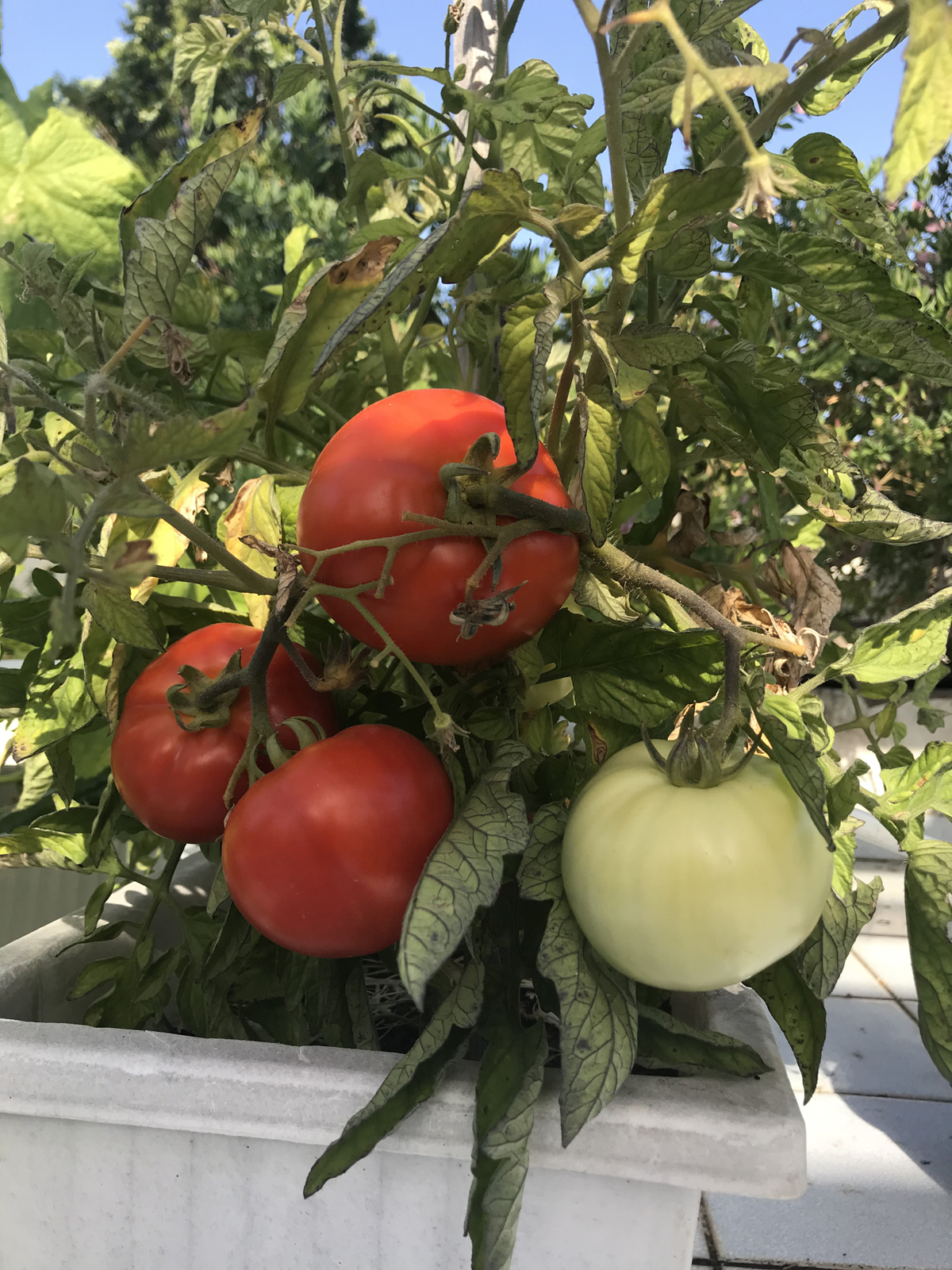
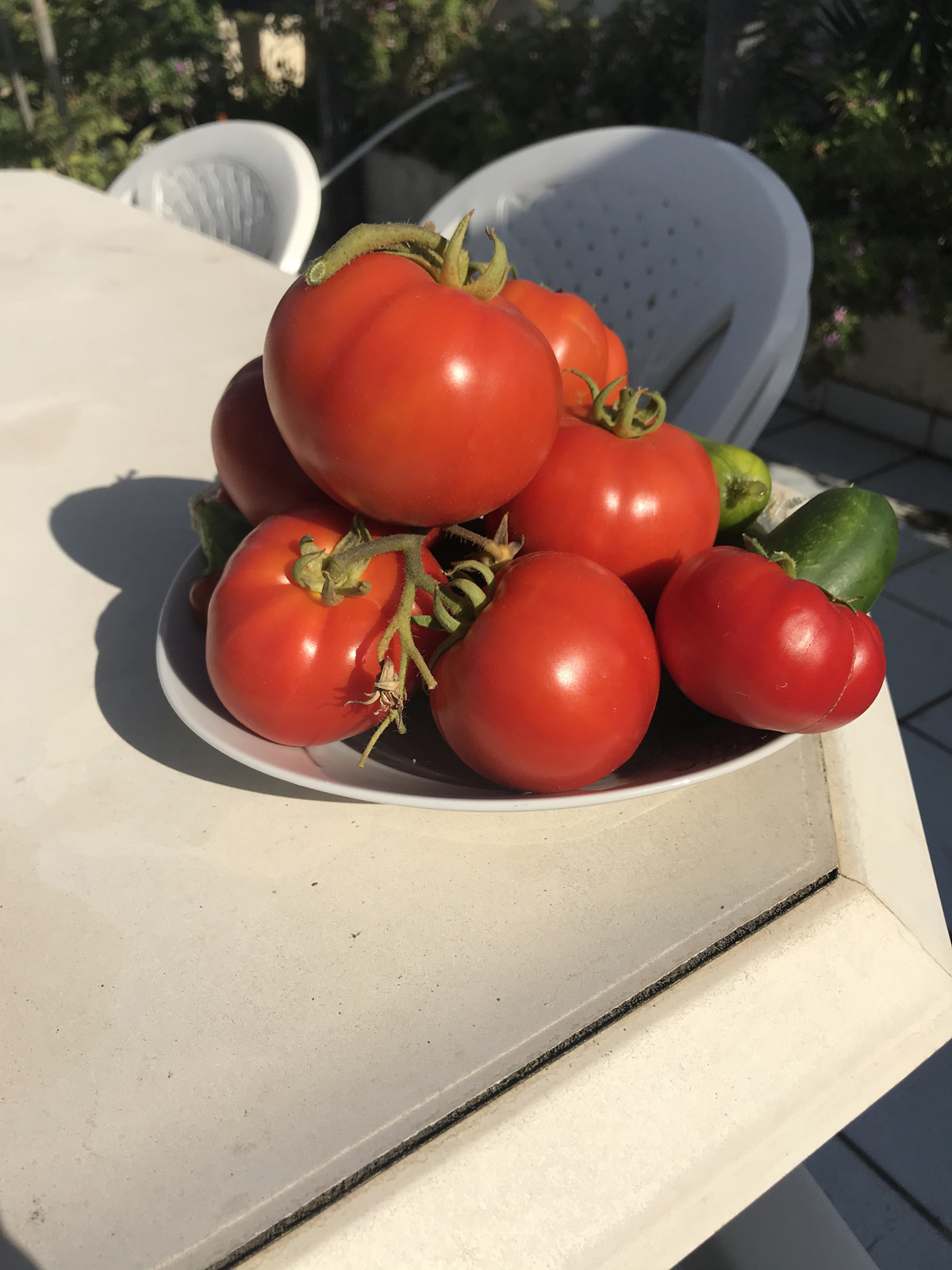
Epilogue
The production of compost in an urban environment in the city, from “green” and “brown” residues that would otherwise end up in garbage bins and landfills, is feasible.
Imagine how much material we consider “trash” could be turned into fertilizer for potted plants.
Imagine how much less trash the city would send to the landfill.
Everything is a matter of education and good disposition.
Tags: CITY • COMPOST • COMPOST BIN • COMPOSTING BIN • EARTHWORMS • FERTILIZER • FERTLIZERS • HOME COMPOSTING • URBAN CULTIVATION


